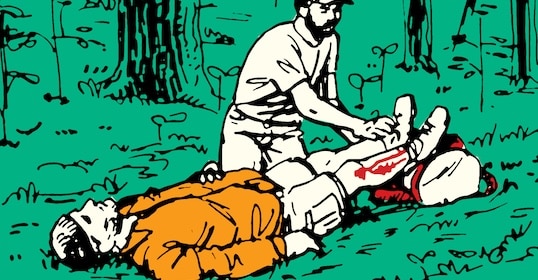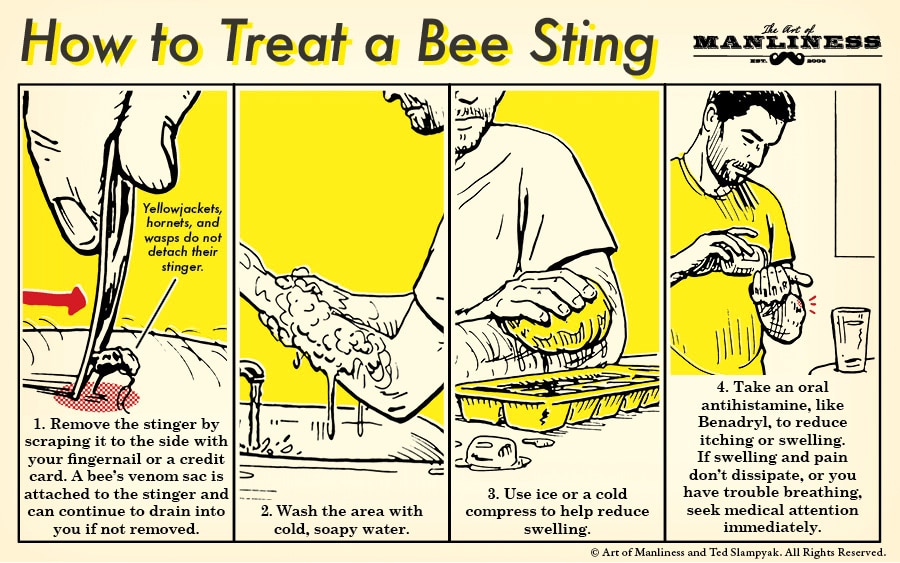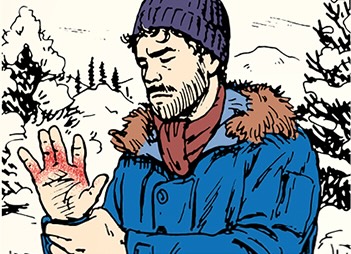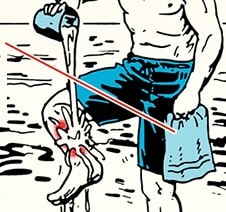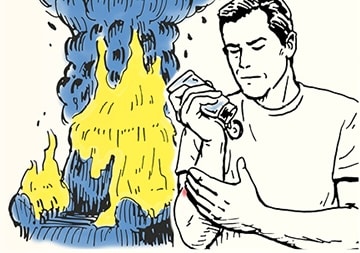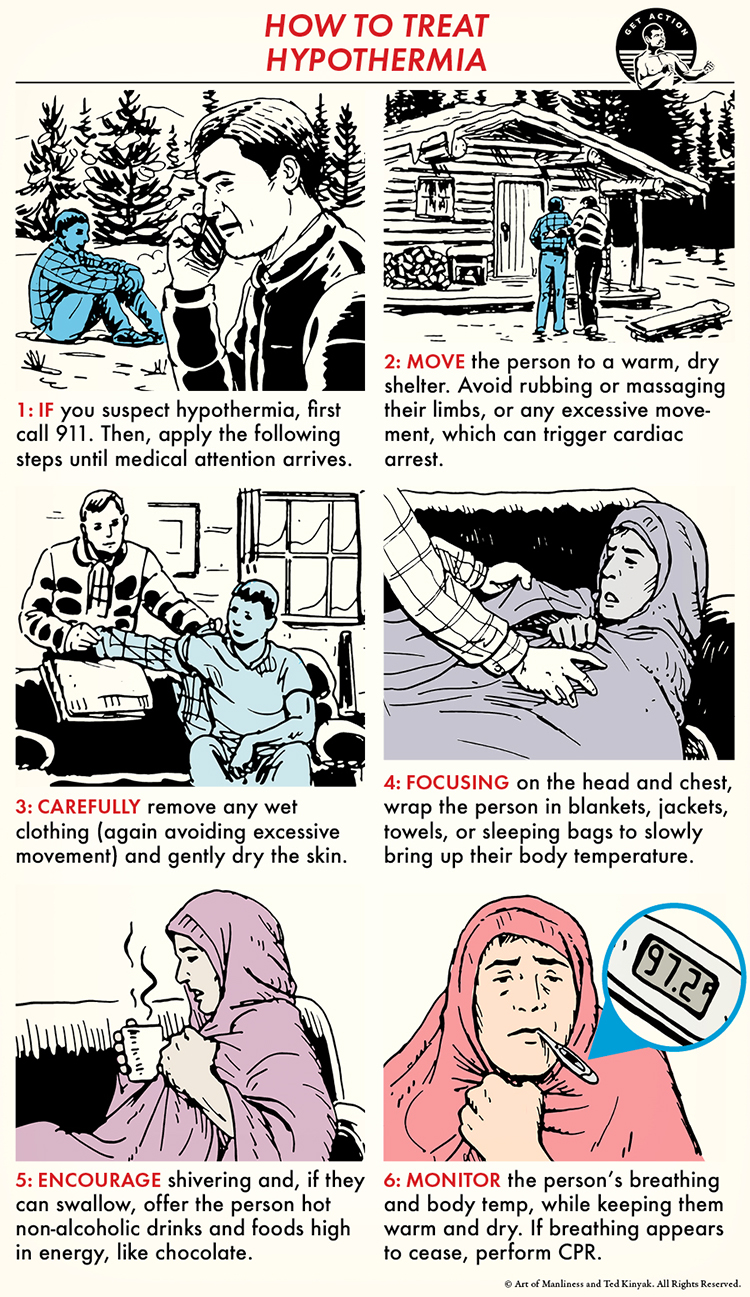
An important part of manhood has always been about having the competence to be effective in the world — having the breadth of skills, the savoir-faire, to handle any situation you find yourself in. With that in mind, each Sunday we’ll be republishing one of the illustrated guides from our archives, so you can hone your manly know-how week by week.
It’s easy to imagine hypothermia as the type of malady that can only affect people who get trapped in disastrous conditions, like being lost in a frozen Alaskan wilderness or falling into an icy river. But it’s something that can happen to you even under far less extreme conditions.
Imagine a simple day hike, starting at low elevation in sunny weather. As you ascend the mountain, you work up a good sweat in your cotton t-shirt and don’t take breaks to hydrate or eat. At the top, the weather turns, rain or wind settles in, and you twist your ankle. Your cotton shirt is now acting like a refrigerator, and the wind only serves to pull your body temperature down quicker. At first, symptoms are seemingly minor. Shivering and a lack of coordination set in, but with time and more exposure, the symptoms change. Severe confusion, a surprising lack of shivering, and inexplicable feelings of being too warm begin to take over. You may even take clothes off because you feel too hot, which only speeds up the process. A day hike has quickly turned into a very dangerous scenario.
While the risk of developing hypothermia increases significantly as the temperature drops below 32°F, you don’t need to be in freezing temps to get it; hypothermia can set in at any temperature below 50°F if you are exposed to cold conditions for an extended period, especially if you are wet, improperly dressed, or unable to move to generate heat.
You can prevent hypothermia by wearing synthetic or wool clothes, checking the weather forecast, keeping dry, and staying nourished and hydrated. But if you find yourself on the brink, knowing what to do at that moment could mean the difference between life and death.
Like this illustrated guide? Then you’re going to love our book The Illustrated Art of Manliness! Pick up a copy on Amazon.


